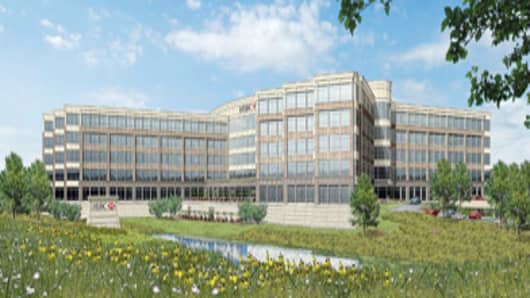The company traces its beginning to the Hong Kong Shanghai Banking Corporation, which was established in 1865 to finance the growing trade between China and Europe, principally England. The parent company has offices in 83 countries and 1,000 branches.
Stephen Wright, president of Wright Heerema Architects of Chicago and the principal designer, said his design team used the Green Building Council’s LEED rating system as a guideline for sustainability. LEED stands for leadership in energy, environmental design.
“The unique shape and orientation of the building, for instance, is an outgrowth of our goal to maximize southern exposure and minimize the east and west exposure,” Mr. Wright said. “We want to control the sun.”
Mr. Wright was one of the architects who designed the previous headquarters. “We didn’t have the technology then as what we have now,” he said.
The technology gives HSBC employees the ability to individually adjust the air flow under their feet. Such features, he said, enhance productivity.
HSBC also has a policy allowing its employees to work as many as two days a week at home to enable them to save time and money on commuting. Nearly 20 percent of the workers sometimes work at home.
To try to achieve the company’s goal of reducing waste by 85 percent, employees, from the chief executive on down, are required to empty the trash totes that hang under each desk after work.
In addition, glass, plastic and aluminum are deposited in separate receptacles for recycling. Printers are programmed to print on both sides of the paper. Instead of working at night, cleaning crews are scheduled to work during the day to cut down on lighting costs.
It is not only the rules for workers in the building that make it stand out. Mr. Wright, who has been an architect for 35 years, said the HSBC structure raised the bar for green and smart buildings.
“This is the most sophisticated environmentally sensitive building we’ve ever designed,” he said.


